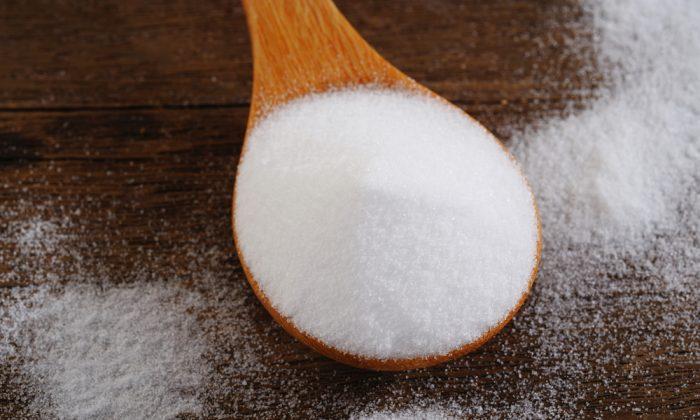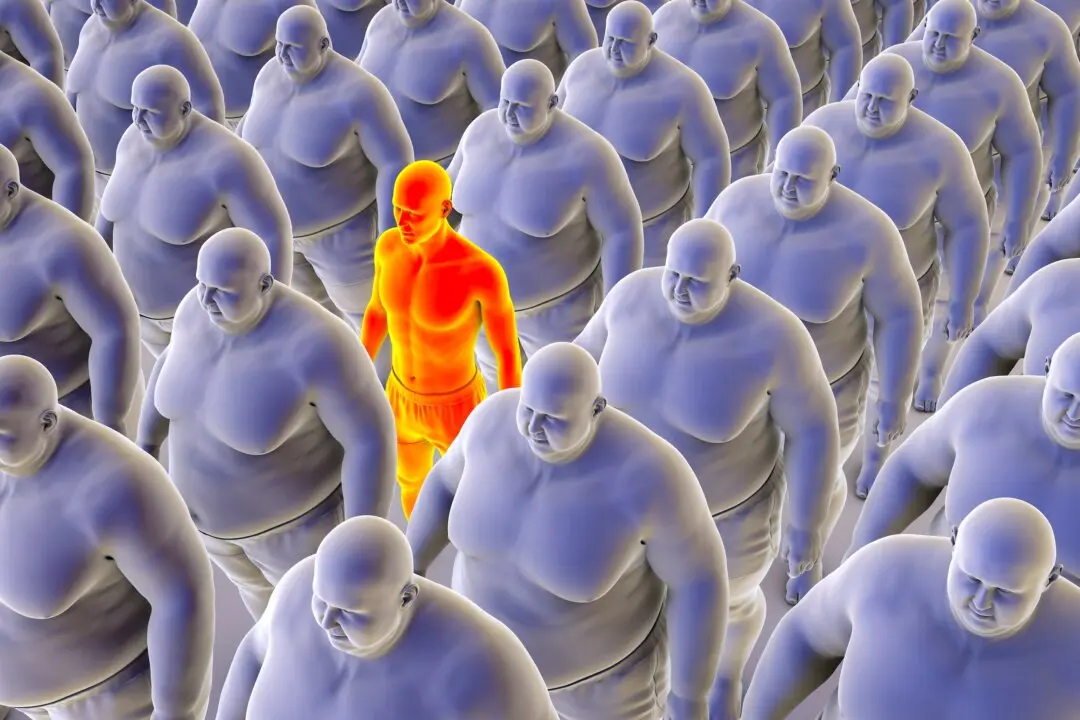Baking soda, or sodium bicarbonate, is a staple in many homes for baking and cleaning purposes – but there’s a good chance you’re not taking full advantage of all that baking soda has to offer.
For instance, did you know there’s a whole gamut of medicinal uses for baking soda, such as safely removing splinters from your fingers, or just brushing your teeth?
It rates right up there with hydrogen peroxide as one of the most inexpensive and safe health tools around (you can buy an entire box of baking soda for about $1), so it makes sense to learn all you can about the many, many uses of baking soda.
A Brief Baking Soda History
In its natural form, baking soda is known as nahcolite, which is part of the natural mineral natron. Natron, which contains large amounts of sodium bicarbonate, has been used since ancient times. For instance, the Egyptians used natron as a soap for cleansing purposes. Later, anecdotal reports throughout history suggest that many civilizations used forms of baking soda when making bread and other foods that required rising.
However, it wasn’t until 1846 when Dr. Austin Church and John Dwight began to manufacture and sell the compound we know as baking soda today. By the 1860s, baking soda was featured in published cookbooks, and in the 1930s was widely advertised as a “proven medical agent.” Come 1972, the idea to keep a box of baking soda in your fridge to keep food fresh was born, and it really caught on … raise your hand if you have a box in your fridge right now!
Baking soda was popularized by Arm & Hammer more than 150 years ago, and while many are aware of its versatile qualities for cooking and household use, few people realize that baking soda also has potent medicinal properties.

Baking Soda May Help Fight Colds and the Flu
Some people believe that when taken internally, baking soda can help maintain the pH balance in your bloodstream. This is likely the basic premise behind its recommended uses against both colds and influenza symptoms. In their booklet “Arm & Hammer Baking Soda Medical Uses,” published in 1924, Dr. Volney S. Cheney recounts his clinical successes with sodium bicarbonate in treating cold and flu:
“In 1918 and 1919 while fighting the ‘flu’ with the U. S. Public Health Service it was brought to my attention that rarely anyone who had been thoroughly alkalinized with bicarbonate of soda contracted the disease, and those who did contract it, if alkalinized early, would invariably have mild attacks.
I have since that time treated all cases of ‘cold,’ influenza and LaGripe by first giving generous doses of bicarbonate of soda, and in many, many instances within 36 hours the symptoms would have entirely abated.
Further, within my own household, before Woman’s Clubs and Parent-Teachers’ Associations, I have advocated the use of bicarbonate of soda as a preventive for ‘colds,’ with the result that now many reports are coming in stating that those who took ’soda‘ were not affected, while nearly everyone around them had the ’flu.’
Not too certain though about how valid the pH optimizing is as to baking soda’s mechanism of action, as clinically I have frequently used diluted hydrochloric acid intravenously to also help people nearly instantly recover from acute infections. Obviously this is pushing the pH in the opposite direction, yet both appear to work, suggesting that the mode of action may be other than pH mediated.
The administration is easy enough, and is relatively harmless even if you should not experience relief from your cold symptoms. Simply dissolve the recommended amount of baking soda in a glass of cold water and drink it. Recommended dosages from the Arm & Hammer Company for colds and influenza back in 1925 were:
- Day 1 -- Take six doses of ½ teaspoon of baking soda in glass of cool water, at about two-hour intervals
- Day 2 -- Take four doses of ½ teaspoon of baking soda in glass of cool water, at the same intervals
- Day 3 -- Take two doses of ½ teaspoon of baking soda in glass of cool water morning and evening, and thereafter ½ teaspoon in glass of cool water each morning until cold symptoms are gone

11 More Baking Soda Medicinal Uses
You'll be amazed at the myriad of remedies you can whip up if you have a box of baking soda handy. Among them:
- Ulcer Pain: I have personally recommended this to many including family members and have been surprised how remarkably effective it is. This would make sense, as the baking soda would immediately neutralize stomach acid. Dosing is typically 1-2 teaspoons in a full glass of water.
- Splinter removal: Add a tablespoon of baking soda to a small glass of water, then soak the affected area twice a day. Many splinters will come out on their own after a couple of days using this treatment.
- Sunburn remedy: Add ½ cup of baking soda to lukewarm bathwater, then soak in the tub for natural relief. When you get out, let your skin air dry, rather than toweling off the excess baking soda, for extra relief. You can also add a mixture of baking soda and water to a cool compress and apply it to the sunburn directly.
- Deodorant: If you want to avoid the parabens and aluminum found in many deodorants and antiperspirants, try a pinch of baking soda mixed with water instead. This simple paste makes an effective and simple natural deodorant.
- Enhanced sports performance: Distance runners have long engaged in a practice known as “soda doping” – or taking baking soda capsules -- before races to enhance performance,3 a measure that’s thought to work similarly to carbohydrate loading. While I don’t suggest you try this at home, it’s another example of baking soda benefits.
- Plaque-busting tooth and gum paste: For an incredibly effective tooth and gum paste, use a mixture of six parts of baking soda to one part of sea salt. Place them in a blender and mix for 30 seconds, then place in a container to use. Wet the tip of your index finger and place a small amount of the salt and soda mixture on your gums. Starting with the upper outside gums and then the inside of the upper, followed by the lower outside of the gums then the lower inside, rub the mixture onto your teeth and gums. Spit out the excess. After 15 minutes rinse your mouth. This mixture is incredibly effective at killing bacteria.
- Insect Bites: Apply a paste made of baking soda and water to insect bites to help relieve itching. You can also try rubbing the dry powder onto your skin. This is also effective for itchy rashes and poison ivy.
- Teeth whitener: For a natural way to whiten your teeth, crush one ripe strawberry and mix it with 1/2 teaspoon of baking soda. Spread the mixture onto your teeth and leave on for five minutes. Then brush your teeth and rinse. This method should be used no more than once a week, as excessive use could potentially damage your tooth enamel.
- Foot soak: Add three tablespoons of baking soda to a tub of warm water for an invigorating foot soak.
- Exfoliator: A paste made from three parts of baking soda combined with 1 part water can be used as an exfoliator for your face and body. It’s natural, inexpensive and gentle enough to use every day.
- Detox bath: Baking soda and apple cider make a wonderful spa-like bath for soaking away aches and pains and detoxing. It also cleans the tub and the drain, as a bonus!

Baking Soda is an Excellent Household Cleaner, Too
After you’ve stashed a box of baking soda in your medicine cabinet, put one under your kitchen sink, in your bathroom and with your cleaning supplies too …
- Baking soda is great to scrub your bath and kitchen with. Put it in a glass grated cheese container with a stainless steel top that has holes in it, and just sprinkle the baking soda on the surfaces and scrub. You may add a few drops of your favorite essential oil to this. Lavender and tea tree oil have potent anti-bacterial qualities.
- Baking soda mixed with apple cider vinegar is a bubbly combination that has many uses. As a drain cleaner, sprinkle baking soda down the drain, then add apple cider vinegar and let it bubble for 15 minutes, then rinse with hot water. This is a safer alternative to dangerous drain cleaners.
- Soak pots and pans in hot water and baking soda for 15 minutes to easily wipe away baked-on food.
- Use baking soda to scrub your barbecue grill.
- Clean baby toys in a mixture of 4 tablespoons of baking soda and 1 quart of water.
- Baking soda can also be used as a fabric softener in your laundry, or to get your clothes whither and brighter (add one cup to your laundry load).
- Baking soda is a natural carpet cleaner. Sprinkle it onto carpets, let it sit for 15 minutes, then vacuum it up.
- To polish silver without using toxic silver polish, fill your kitchen sink with hot water, add a sheet of aluminum foil and baking soda, and let the silver pieces soak until clean. It is an easy and fun way to clean silver.
- Sprinkle baking soda in your shoes for a natural deodorizer.
- In the event of a minor grease fire in your kitchen, use baking soda to help smother out the flames.
Not bad for around $1 a box, right?
*Image of “baking soda“ via Shutterstock






